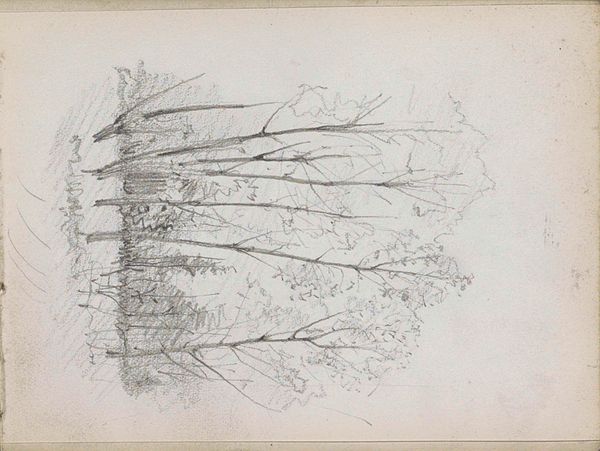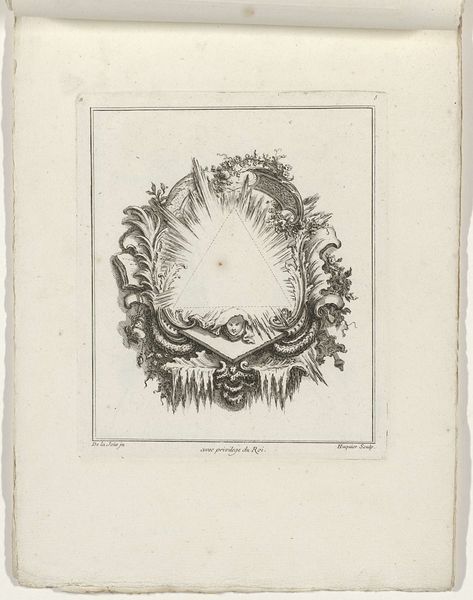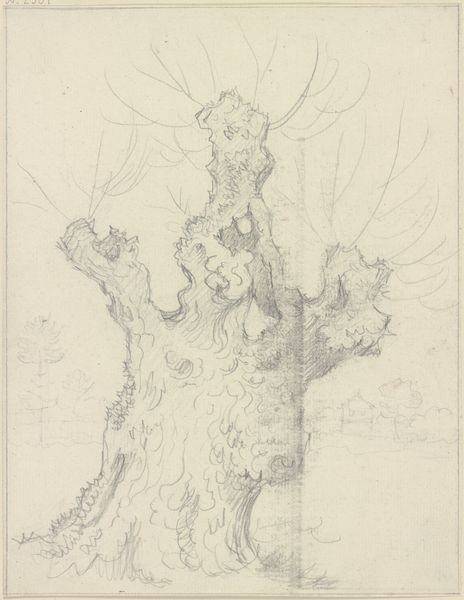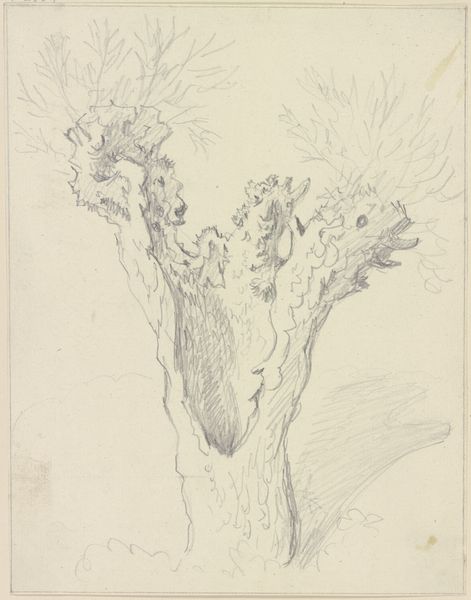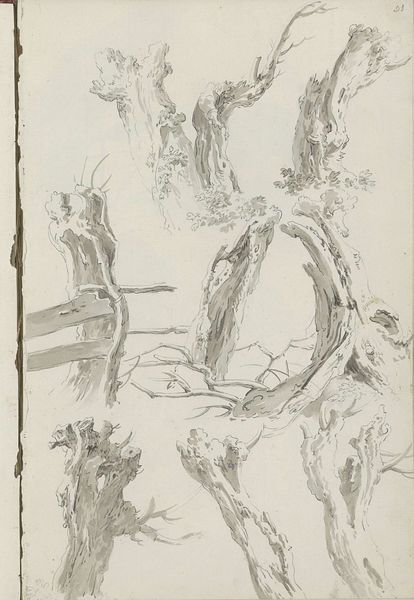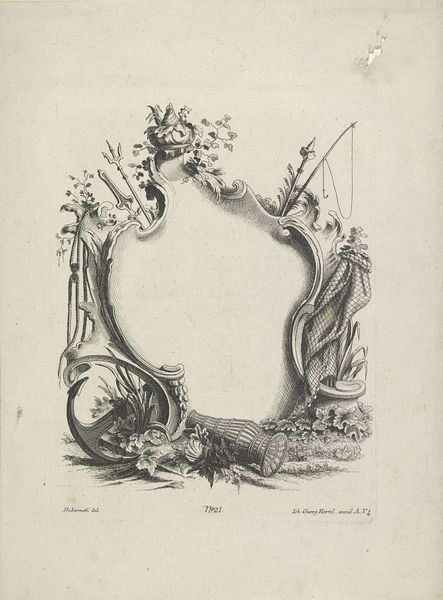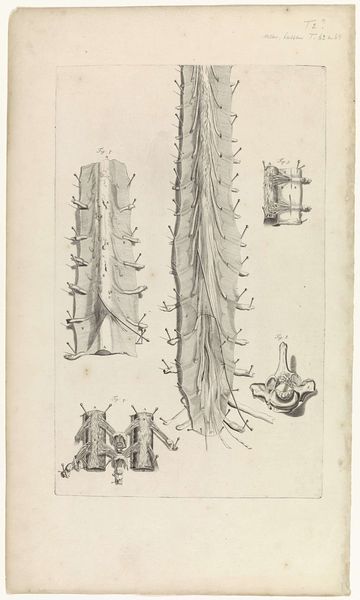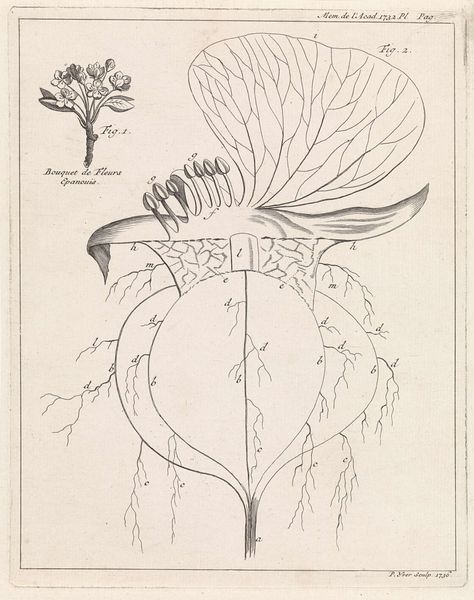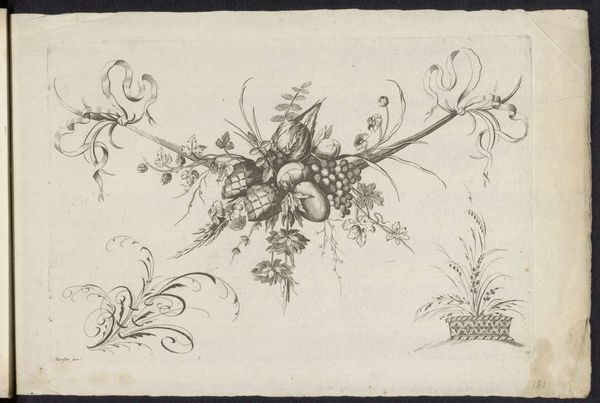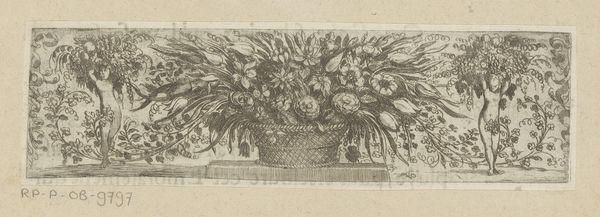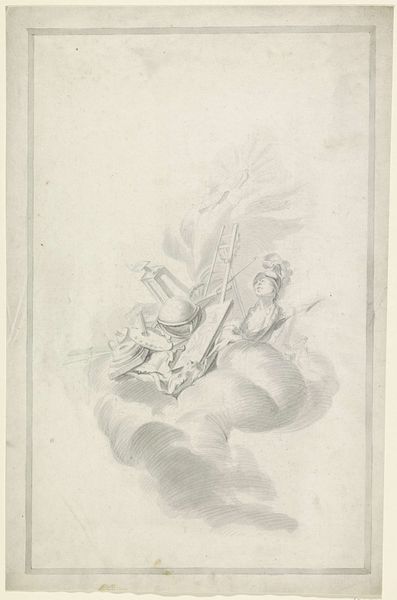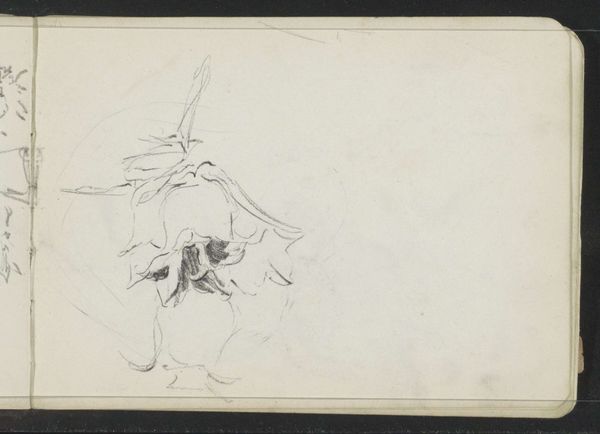
Een van de vier trofeeën voor het monument op het Nationale feest ter viering van de Vrede van 17 december 1799 1799
0:00
0:00
drawing, pencil
#
drawing
#
neoclassicism
#
form
#
pencil
#
history-painting
Dimensions: height 306 mm, width 465 mm
Copyright: Rijks Museum: Open Domain
Curator: This drawing by Bartholomeus Ziesenis, from 1799, is a study for one of the four trophies designed for a monument celebrating the Peace of 1799, a brief pause in the tumultuous years of revolution and war in Europe. Editor: The first impression is of controlled chaos. The drawing style, while precise, uses layers of hatching, mostly diagonal, to evoke an overflowing energy, especially from those bundled flags. Curator: Indeed. Ziesenis employs Neoclassical motifs, such as the laurel wreath at the top and the stacked drums below, to convey an aura of victory and stability. But understanding this imagery requires us to consider the social and political climate of the Batavian Republic, a satellite state of revolutionary France. This peace celebration sought to create a national identity after a decade of revolution and upheaval, even if enforced from above. Editor: Agreed. The formal elements really underscore that imposed order. Look at how those rectilinear shapes behind the flags, those severe vertical lines of the monument's facade, constrain the dynamism. And it's all captured in graphite, so controlled, almost clinical, a very deliberate artistic choice that reinforces the idea of imposed control. Curator: Exactly. These celebrations were carefully orchestrated events designed to reinforce the ruling elite's vision of national unity and their place within a French dominated Europe. Even the staging of public events during this era mirrored how political power worked, both visible and highly formalized. Editor: Thinking purely about composition now, that dense knot of flags and weaponry draws the eye immediately. It is not particularly symmetrical but clearly displays balance; a beautiful synthesis of geometric arrangement and the appearance of movement. The lines give the drawing real vibrancy despite the muted color palette. Curator: Seeing this drawing, then, asks us to reconsider monuments. Are they meant to convey spontaneous national consensus, or are they staged illusions of such? This drawing reminds us that the meaning of monuments are invariably caught up with specific ideologies and the narratives that elites wished to propagate at particular moments in time. Editor: From a formal perspective, analyzing this sketch gives insight into the construction of not just the trophies, but also the narrative being woven by Ziesenis, showing that art during times of conflict is more than just surface. The careful composition of its separate elements reveals much of the political discourse that prevailed.
Comments
No comments
Be the first to comment and join the conversation on the ultimate creative platform.


